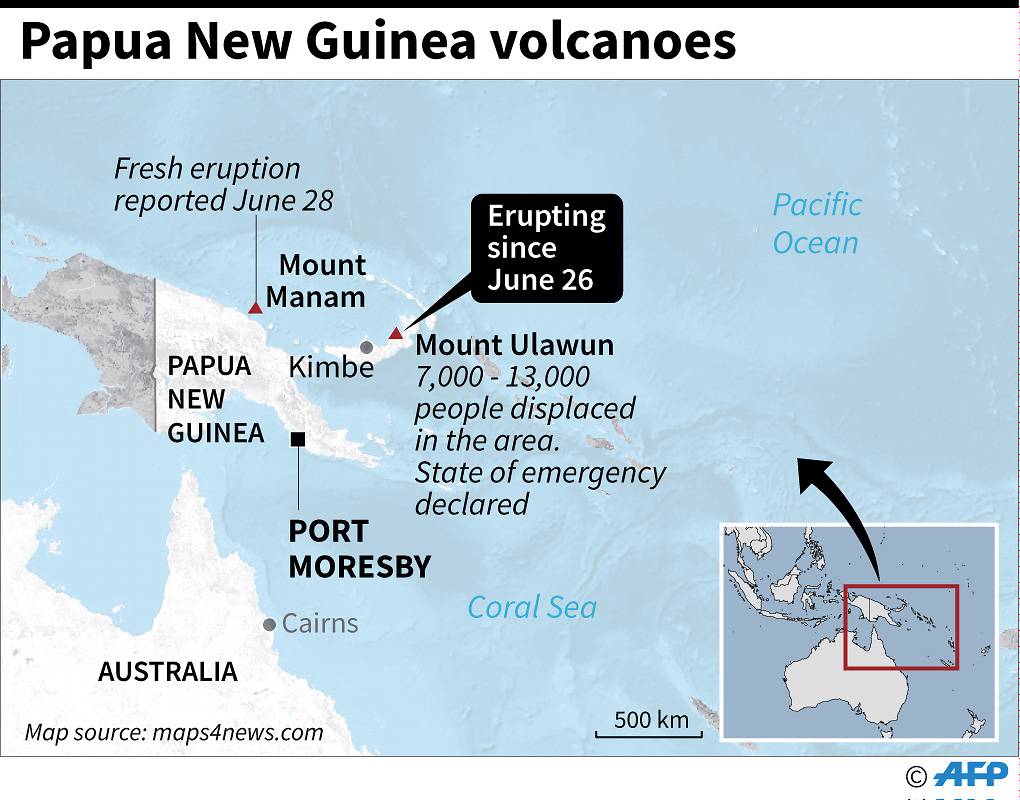Volcano erupts in Papua New Guinea, army deployed
| |
Between 7,000 and 13,000 people are believed to have been displaced by Mount Ulawun's eruption AFP/Craig Powell
Lava and ash flows from Mount Ulawun - one of the world's most hazardous volcanoes - have subsided, but between 7,000 and 13,000 people are believed to have been displaced and a state of emergency has been declared.
"We will mobilise the military to go in and assess the situation, and we will despatch the military to assist on the ground," said Prime Minister James Marape.
"The governor is already on the ground assessing the situation, and once I receive the report, we will see how we can best assist."
Local MP Joseph Lelang said as many as 13,000 people may have been displaced, and 1,000 have lost their homes, while Leo Porikura, an official with the West New Britain Disaster Office, put the number of displaced at around 7,000.
"Our focus now is providing relief supplies to the people affected by the volcanic eruption," he said.
Steven Saunders, a surveyor at Rabaul Volcano Observatory, confirmed there was a small one-off explosion from Ulawun in the early hours but it was not sustained, and activity has eased.
The emergency response was hampered by the closure of the region's main airport, which Saunders said was covered by around three centimetres of ash and remained closed.
 |
As the authorities were struggling to get to grips with disruption caused by Mount Ulawun, volcanologists reported that the nearby island volcano of Manam had begun to erupt.
Australia's Darwin Volcanic Ash Advisory Centre reported satellite imagery indicated an ongoing eruption.
Manam is one of Papua New Guinea's most active volcanos and last erupted in January.
It is a volcanic cone that towers out of the sea north of Papua New Guinea's mainland and has a history of eruptions, with significant activity in November 2004 forcing the evacuation of some 9,000 people./.
VNF/AFP
Recommended
 World
World
Pakistan NCRC report explores emerging child rights issues
 World
World
"India has right to defend herself against terror," says German Foreign Minister, endorses Op Sindoor
 World
World
‘We stand with India’: Japan, UAE back New Delhi over its global outreach against terror
 World
World
'Action Was Entirely Justifiable': Former US NSA John Bolton Backs India's Right After Pahalgam Attack
 World
World
US, China Conclude Trade Talks with Positive Outcome
 World
World
Nifty, Sensex jumped more than 2% in opening as India-Pakistan tensions ease
 World
World
Easing of US-China Tariffs: Markets React Positively, Experts Remain Cautious
 World
World
